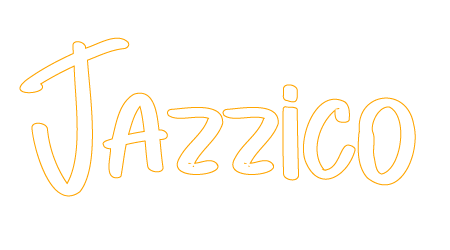Introduction
In the fast-paced digital age, where information overload is common, staying organized is crucial for maximizing productivity and efficiency. Among the many tools we use to capture and retain knowledge, notebooks hold a special place. From personal journals to work-related notebooks, these trusty companions house valuable insights, ideas, and notes. However, without proper organization, notebooks can quickly become chaotic and counterproductive. In this article, we will explore effective strategies to organize your notebooks and unlock their full potential in enhancing your productivity.
The Importance of Organizing Notebooks
Boosts Productivity
A well-organized notebook allows you to find information quickly, saving valuable time in the process. Instead of aimlessly flipping through pages, a clear structure enables you to access relevant details efficiently, keeping you focused on the task at hand.
Facilitates Easy Retrieval of Information
When you organize your notebooks, you create a reliable system for retrieval. Imagine having critical meeting notes, project ideas, or creative insights at your fingertips whenever you need them. Proper organization ensures you never lose vital information again.
Reduces Stress and Overwhelm
Cluttered notebooks can lead to stress and a feeling of overwhelm, making it challenging to concentrate. By arranging your notes systematically, you create a sense of order and tranquility, allowing for a more focused and calm mind.
Choosing the Right Notebooks
Selecting the appropriate notebooks lays the foundation for effective organization. Consider the following factors when choosing your notebooks:
Consider Purpose and Usage
Identify the primary purpose of the notebook. Is it for work-related tasks, personal journaling, or creative brainstorming? Understanding the notebook's purpose will guide its organization.
Opt for High-Quality Materials
Invest in notebooks made from quality materials to ensure durability and longevity. Well-crafted notebooks withstand wear and tear, preserving your valuable information for years to come.
Select the Appropriate Size
Choose a notebook size that suits your needs. Larger notebooks provide ample space for detailed notes, while smaller ones are more portable and convenient for on-the-go use.
Setting Up a Notebook Organization System
A systematic approach to organizing your notebooks is essential for maintaining order. Implement the following strategies to set up an effective organization system:
Establishing Categories and Sections
Divide your notebook into categories and sections based on the different aspects of your life or work. For instance, separate sections for work projects, personal goals, and creative ideas.
Utilizing Indexing and Page Numbers
Create a detailed index or table of contents at the beginning of the notebook. Number the pages for easy reference and quick navigation.
Color Coding for Easy Identification
Assign specific colors to different sections or categories within the notebook. Color coding helps visually distinguish between topics and makes retrieval more efficient.
Effective Note-taking Techniques
Having a well-organized notebook is only part of the equation; effective note-taking is equally important. Employ these techniques to enhance your note-taking experience:
Use Bullet Points and Lists
Condense information into bullet points and lists. They are easier to read and help highlight key points and takeaways.
Employ Mind Mapping and Diagrams
For brainstorming sessions and creative ideas, use mind maps and diagrams. They visually represent connections between ideas and aid in creative problem-solving.
Incorporate Visual Elements
Use drawings, sketches, and sticky notes to add visual elements to your notes. Visual cues enhance memory retention and make notes more engaging.
Regular Maintenance and Review
Organization is an ongoing process. Maintain the effectiveness of your notebook organization with these practices:
Periodic Clean-Up and Reorganization
Regularly review and declutter your notebooks. Remove outdated or irrelevant information to keep them concise and efficient.
Consistent Review of Notes
Set aside time to review your notes regularly. This practice reinforces memory and ensures that important information stays fresh in your mind.
Updating and Adding Information
As new insights and ideas emerge, update and expand your notes accordingly. Keep your notebooks dynamic and up-to-date.
Digital vs. Physical Notebooks
With the rise of digital note-taking apps, it's essential to consider the pros and cons of both digital and physical notebooks:
Advantages and Disadvantages of Each
Digital notebooks offer searchability, cloud storage, and easy access from multiple devices. Physical notebooks provide a tangible and sensory experience, allowing for more creative expression.
Integrating Both Systems
Consider using a combination of digital and physical notebooks. Sync data between the two to enjoy the benefits of both worlds.
Syncing and Backing Up Data
For digital notebooks, ensure regular syncing and back up your data to prevent data loss.
Overcoming Common Organizational Challenges
Maintaining notebook organization can be challenging at times. Here's how to overcome common hurdles:
Procrastination and Avoidance
Don't postpone organizing your notebooks. Set aside dedicated time regularly for this task.
Finding Motivation to Organize
Remind yourself of the benefits of an organized notebook, such as improved productivity and reduced stress.
Dealing with Overfilled Notebooks
If a notebook becomes overcrowded, consider creating a new one dedicated to a specific topic or period.
Best Practices for Long-Term Organization
Sustain notebook organization in the long term with these best practices:
Archiving Old Notebooks
As notebooks fill up, archive them for future reference. Label and store them in a safe place.
Storing and Preserving Notebooks
Protect your physical notebooks from damage and environmental factors that could degrade the quality of the paper.
Keeping a Master Index
Maintain a master index that lists all your notebooks, their categories, and the period they cover. This index will facilitate tracking and retrieval.
The Connection Between Organization and Creativity
Organized notebooks not only improve productivity but also boost creativity:
Enhanced Idea Generation
When information is organized, your brain can easily connect dots and generate innovative ideas.
Clearer Thought Processes
Organization helps streamline thoughts and enhances clarity, leading to better decision-making and problem-solving.
Streamlined Creative Workflows
Well-organized notebooks allow for smoother and more efficient creative workflows, promoting a state of flow.
Conclusion
Organizing your notebooks for maximum productivity is a valuable skill that can significantly improve your personal and professional life. By following the strategies outlined in this article, you can turn your notebooks into powerful tools that enhance creativity, reduce stress, and boost overall productivity.
FAQs
-
Should I choose digital or physical notebooks? It depends on your preferences and needs. Consider the advantages of each and decide which system aligns better with your workflow.
-
How often should I review and update my notebooks? Aim to review your notes regularly, preferably once a week or month, and update them as needed.
-
Can I combine personal and work-related notes in one notebook? Yes, you can use one notebook for both personal and work-related notes. However, make sure to maintain a clear organizational structure within the notebook.
-
What should I do with old notebooks that are no longer in use? Archive old notebooks by labeling and storing them in a safe place. They may contain valuable information for future reference.
-
Is color coding necessary for notebook organization? Color coding is not mandatory, but it can significantly improve the ease of navigation and retrieval within your notebooks.





Leave a comment
All comments are moderated before being published.
This site is protected by hCaptcha and the hCaptcha Privacy Policy and Terms of Service apply.